Sorry for the slight hiatus. I am now settling into a routine for this newsletter as I try to wrap up my PhD, and sometimes, my time runs out. Moving forward, please expect two newsletters a month.
There are two things I have built my online persona on — peanut-based stews and palm oils. These were not things I actively sought to champion. They were foods I had no choice but to champion because they were both misunderstood by my audience and many outside of West/Central Africa.
Palm oils within the African context, I believe, exist outside of commercialized palm oils. They are made differently, they function differently, and most importantly, they are an expression of our traditional culinary cultures. Indigenous to West and Central Africa, the oil palm grows wild in our forests like they have for centuries (some may say millennia), and is used within sustainable culinary cultures. I talked all about their cultural significance in my previous newsletter.
The root of the commercialized palm oil problem lay in the mixing of capitalism, greed and empire building that gutted the tree away from its indigenous functions.
What is Palm oil
Palm oil is actually a category of oils. The fruit of the oil palm produces two types of oil. One from the fruit itself (red palm oil) and the other from the kernel (palm kernel oil). While from the same fruit, both oils have different properties — in colour, flavour, uses, and tastes. Red palm oil is bright red, like the fruit. The oil is savoury, buttery, a touch bitter, with notes of carrot, probably because of the beta carotene content. Palm kernel oil is made from the nut within the palm fruit kernel and can range from light brown to pale white depending on how well the oil is made. The oil has a slight coconut caramel undertone and a bit on the greasier side. Like most tropical oils, palm oils are higher in saturated fat and can be solid in slightly cooler temperatures.

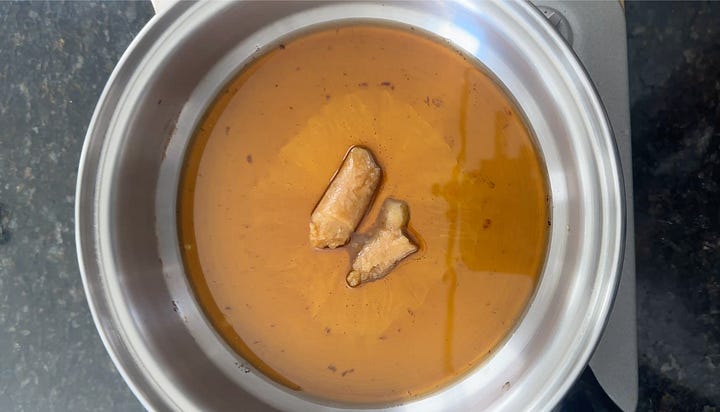
How is it made?
Oil production in West Africa is a lengthy process based on practices passed down through generations. Most often, they are done on a smaller scale with minimal industrialization. We look forward to the unique flavours of these unrefined oils and tailor our processing to these details, a major difference from commercialized palm oil production. Over-processing kills the flavours and nutrients we love. Water is crucial in oil production, and the methods are similar across oils, whether you are making palm oils, shea butter or groundnut oil. Red palm oil and palm kernel oil are made in slightly different ways.
The red palm oil process goes as follows.
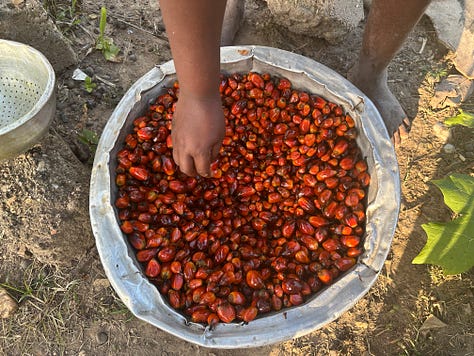
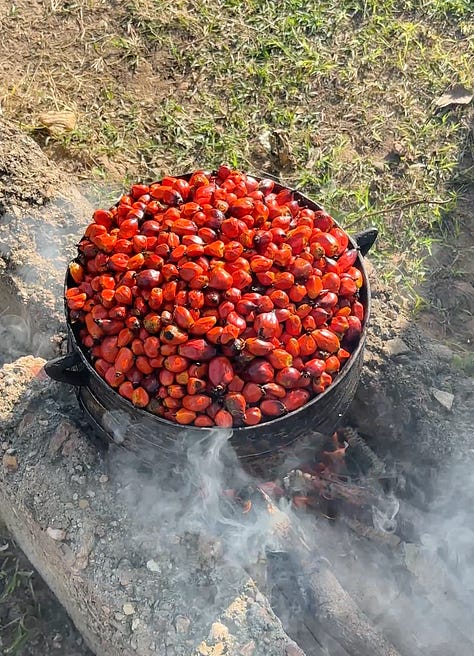

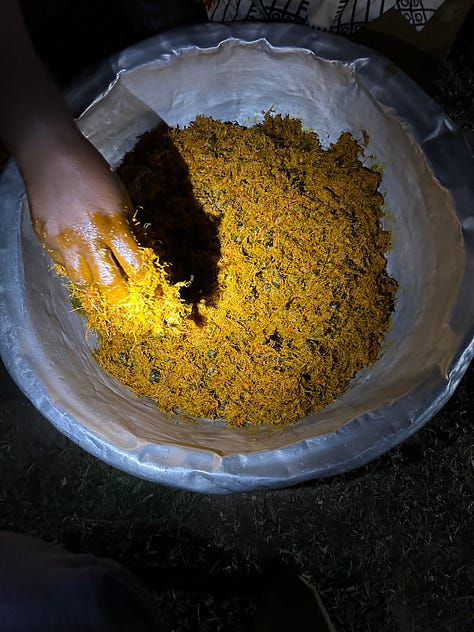

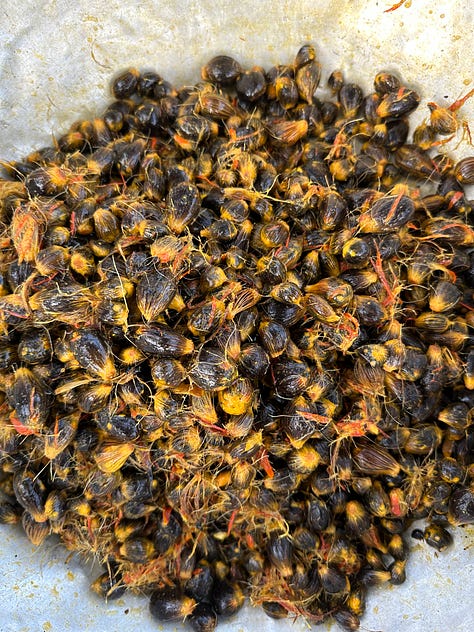
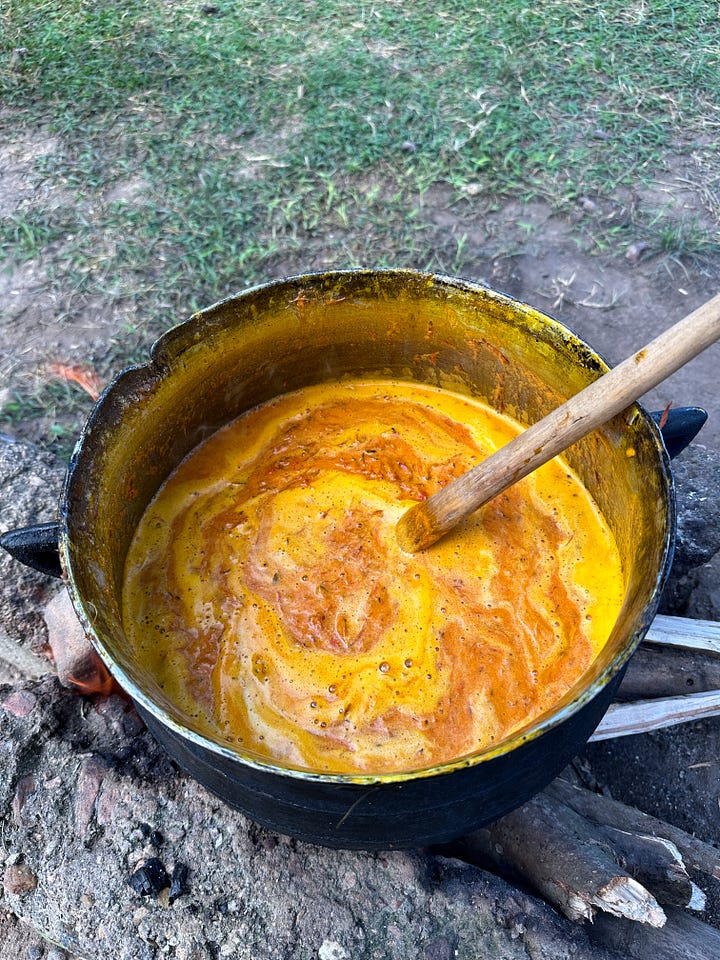

Palm fruit is washed and boiled until soft. The fruit is cooled and pounded. Water is mixed to separate the oil, which floats to the top. The stringy chaff of the palm fruit is saved to make fire. The kernels are separated for palm kernel oil. The red oil that settles on the top is boiled until all the water evaporates.
The palm kernel oil is slightly different. First, the kernels are cracked to remove the shell and roasted. The roasted nuts are ground into a paste, mixed with water and boiled. The oil separates to the top, and it is scooped out. The scooped oil is reboiled to evaporate extra liquid, leaving just the oil.
How is it used
Palm oils have too many functions for me to list. When the crops have been part of your culture for centuries, people definitely had a lot of time to explore all of their uses.
Red palm oil is used in many stews and soups. It adds flavour and colour to our dishes. People use red palm oil to treat mild food poisoning. We fry foods in red palm oil. Some add it to soaps and lotions. It is high in beta carotene, which is a precursor to Vitamin A.


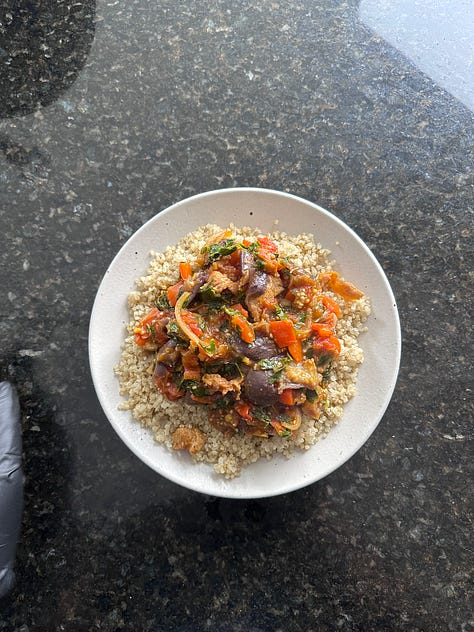
While red palm oil remains popular in West African cooking, the palm kernel is slowly being replaced with regular vegetable oil in everyday cooking, which tends to have a higher smoke point and neutral flavour. Yet to this day, my grandmother does not cook with any other oils beyond palm oil. For her, and many who came before her, palm kernel oil was the “neutral oil”. It was the everyday oil for cooking and frying. It was the lotion before lotions. Palm kernel oil is now popularly used for indigenous soap making. Along with the ash produced from burning cacao pods, palm kernel oil serves as one of the building blocks for African black soap. Its moisturizing properties and high vitamin E content make it a popular choice for soaps.
Oils in their unrefined forms are only found in West and Central Africa, as well as Afro-Brazilian cooking.
Palm oil, empire building and the destruction of ecosystems.
When a plant is detached from its cultural and indigenous uses, it becomes a problem. This problem has manifested itself as deforestation and threats to wildlife in Southeast Asia (Indonesia and Malaysia), a reality that is tied to colonialism, greed and the industrial revolution. At the turn of the 20th century, well into the height of the industrial revolution, palm oil was highly sought after to lubricate machinery and later for food production and even explosives. Soon, palm oil was at the centre of a profitable trade network between West Africa (mainly present-day Nigeria) and Europe. It was so lucrative that European trading companies were established to monopolize the trade of palm oil in West Africa. Trade was not easy, as many locals wanted to rightfully keep trade rights for themselves and were recalcitrant to sell the best quality oil. As disputes were ongoing, the British and the Dutch took seedlings to Southeast Asia, where the colonial government had more control over land and labour. Southeast Asia was fertile with a similar climate to the forested regions of sub-Saharan Africa. After ongoing strife in Nigeria surrounding palm oil, the companies that sought to establish a monopoly on palm oil were dissolved and started the building blocks for the British colony of Nigeria and Unilever (which still operates today).
On the other side of the world, a tree that holds such significance and value to culture and food systems on the African continent was used to destroy the lives of millions just because of profit. Everyone that mattered lost — West Africans lost autonomy of rule to colonialism. South East Asian countries lost their land to commercialized palm. Oil palms in Southeast Asia have been bred differently to produce more oil that is not as flavourful. Some of these cultivars have made their way to the African continent, and many are not fans.
Commercialized palm oil strips red palm oil and palm kernel oil of the flavour and nutrients we love so much in our cooking — this is why I explain that West African palm oils and commercialized palms exist in different spheres, mutually exclusive of each other.
For more information, please check out these two books: “The Oil Palm: A Global History” and “Planet Palm,” as well as the Gastropod Podcast episode “The Most Interesting Oil in the World.”





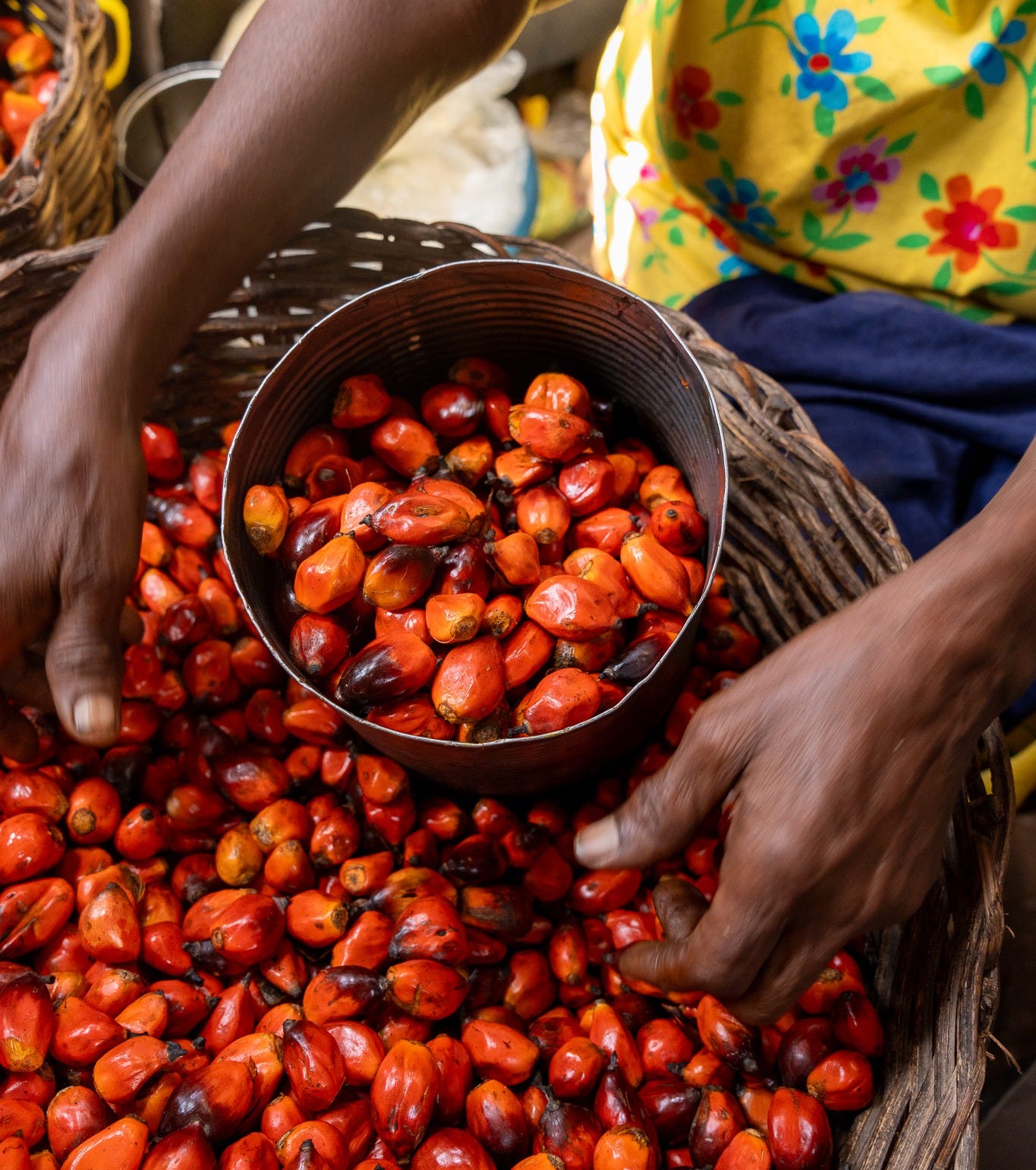

This whole piece was an EDUCATION™ thank you Afia 🖤✨ So much I didn’t know about palm oil, it’s significance as a heritage ingredient and its nutritional value.
This was so informative thank you!